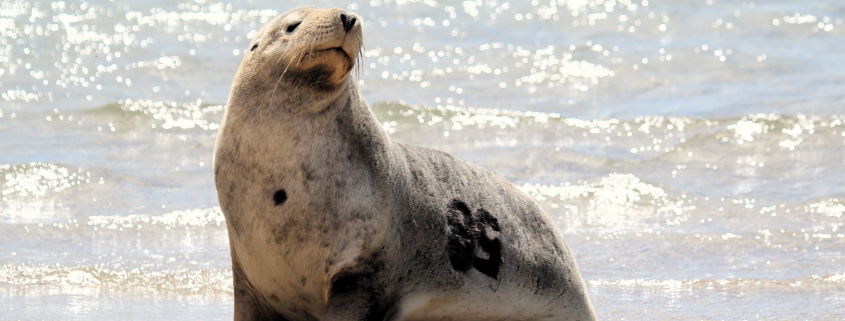Wildlife watch: Keeping a protective eye on Carnac Island’s sea lions
A camera mounted above a beach at Carnac Island is giving researchers real time footage of Australian sea lions and allowing them to monitor the endangered animals.
The equipment, which was installed in 2022, provides a window into the world of the male sea lions that use the A-class reserve to ‘haul out’ or recuperate between foraging and making return trips to their breeding islands.
The project involves researchers from the Department of Biodiversity, Conservation and Attractions, Edith Cowan University, and The Australian National University.
Associate Professor Chandra Salgado Kent from ECU, who is studying the mammals as part of the WAMSI Westport Marine Science Program, said the camera was providing valuable information.
“We are hoping to get an estimate of how many sea lions actually use the Perth metropolitan area and how many sea lions might use a particular haulout site like Carnac Island, which is south west of Fremantle,” Assoc Prof Salgado Kent said.
“The animals are not here year-round. They do migrate up to Jurien Bay for the breeding season which typically takes place every 17 to 18 months. Sea lions also spend a fair amount of time at sea foraging.”
Australian sea lion numbers have struggled to recover since hunting was banned. And while historically there may have been breeding in the Perth region, currently the area is only used by males.
“The camera there gives us a chance to keep an eye on the sea lions, see how many are there every day, if the numbers change throughout the day and what they may be doing.”
Assoc Prof Salgado Kent said staff from the Department of Primary Industries and Regional Development had set up the camera and were managing and maintaining it, which had been an enormous help for the project.
Project co-investigator Dr Sylvia Parsons, from DBCA, said researchers could change the direction the camera pointed and zoom in on particular animals.
The researchers have marked nearly 50 sea lions with numbers using hair dye and have also fitted some with satellite trackers.
“We are hoping to be able to use the camera to identify some of the individuals that we have marked or tagged. We can then use this information to determine how long sea lions may spend on land between foraging trips and hopefully the data will help estimate the size of the population using this space,” Dr Parsons said.
While the project is ongoing, she said the camera had helped them observe sea lions without disturbing them in any way.
“The camera provides a real-time window to be able to observe the behaviour and dynamics of the sea lions on the beach.
“The juveniles in particular seem to be the most active, coming out of the water and settling right next to other sea lions, which may result in the whole group reorganising themselves, before they relax and go back to their resting state again,” Dr Parsons said.
The technology is also helping support other research including on fairy terns, which are another threatened species.
“It is one of the reasons that Carnac Island is closed every year during the breeding season,” Assoc Prof Salgado Kent said.
“If nesting fairy terns are disturbed, they won’t sit with their eggs which means the chicks won’t hatch.”
Researchers say the camera has also been valuable for DBCA management staff to detect if people are illegally going ashore and disturbing birds and sea lions.
“We want the community to be aware of the regulations and appropriate behaviour to ensure the conservation of these species,” Dr Parsons said.

